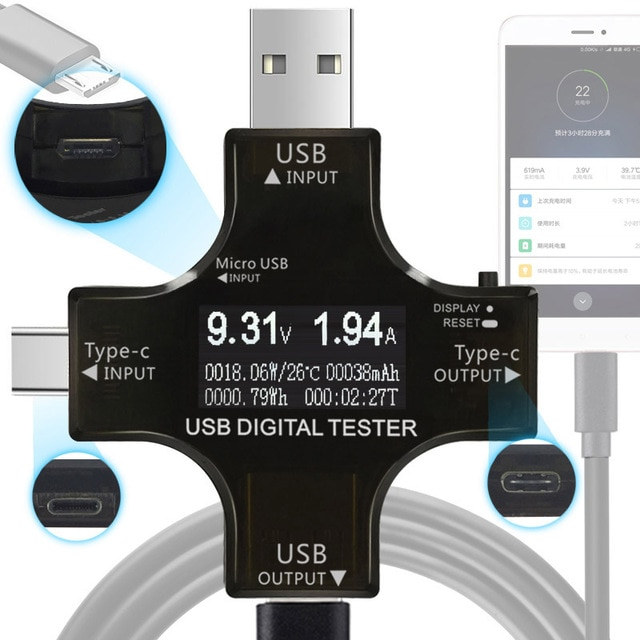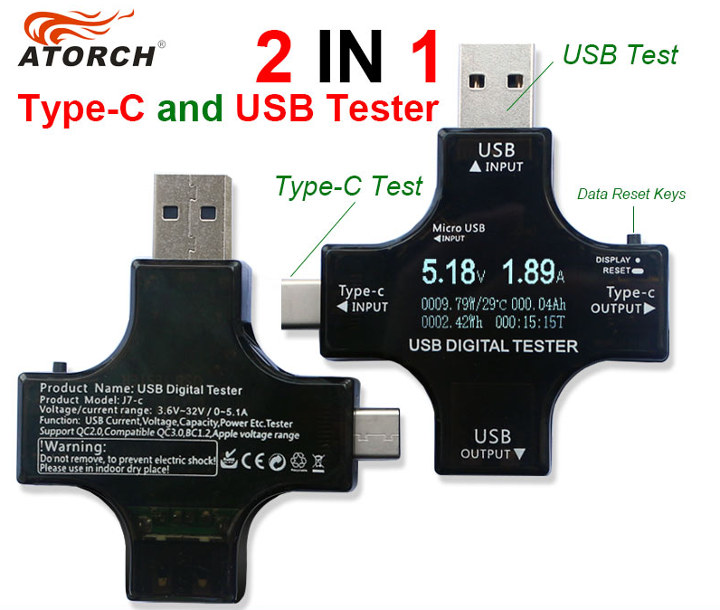Most smartphones are charged over a USB port, and many single board computers are powered by a micro USB or USB type-C port, and USB power meters such as USB Charger Doctor can be useful to evaluate phone chargers, as well as measure power consumption of SBCs.
With the launch of the USB type-C connector and features such as USB PD (Power Delivery), old USB power meters are not adapted to the new standard since the connector and most importantly voltages are different, so we need USB PD compatible meters like Satechi USB Type-C power meter. Today, I decided to look for more options on Aliexpress, and you’ll find many USB-C power meters with the cheapest models going for under $5 shipped. However, ATORCH J7-c model caught my attention since it supports both USB type-C, micro USB type-B, and USB type-A power sources, so you can keep using the same meter for all your USB testing needs.
ATORCH J7-c USB-PD power meter specifications:
- Display – 128×64 Dot matrix display with backlight
- USB Ports
- USB type-C input and output ports
- USB type-A input and output ports
- Micro USB input
- Fast Charging Standards – USB PD, Qualcomm QC 2.0 & QC 3.0, Android BC1.2, MTK-PE (5V / 7V / 9V / 12V), etc…
- Voltage Measurement Range – 3.6V to 32V
- USB D+/D- Voltage Range – 0 to 2.9V
- Current Measurement Range – 0 to 5.1A
- Energy Accumulation Range – 0 to 999,999 mAh
- Power Consumption Range – 0 to 999,999 mAh
- Time Range – 0 to 999 hours 59 minutes 59 seconds
- Dimensions – 6 x 6 cm
The display supports different display modes, as well as English and Chinese languages. If you are interested in ATORCH J7-c power meter, it’s currently sold for $7.22 including shipping.

Jean-Luc started CNX Software in 2010 as a part-time endeavor, before quitting his job as a software engineering manager, and starting to write daily news, and reviews full time later in 2011.
Support CNX Software! Donate via cryptocurrencies, become a Patron on Patreon, or purchase goods on Amazon or Aliexpress






